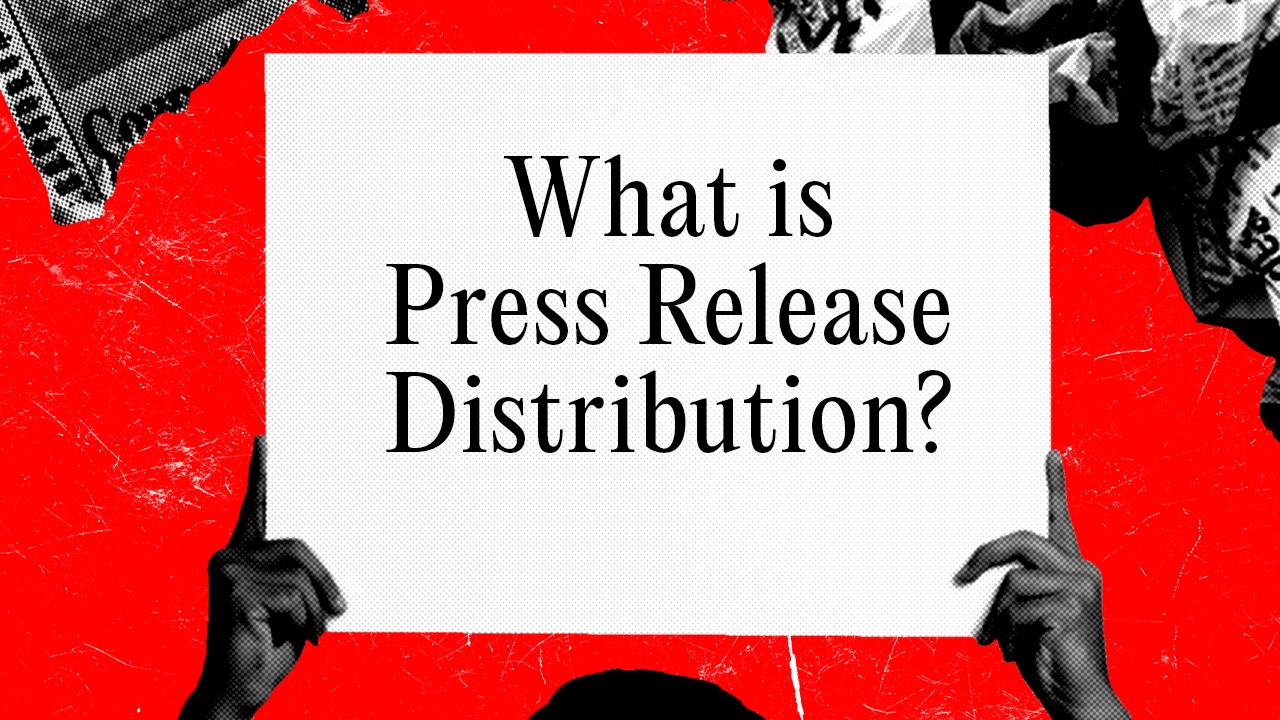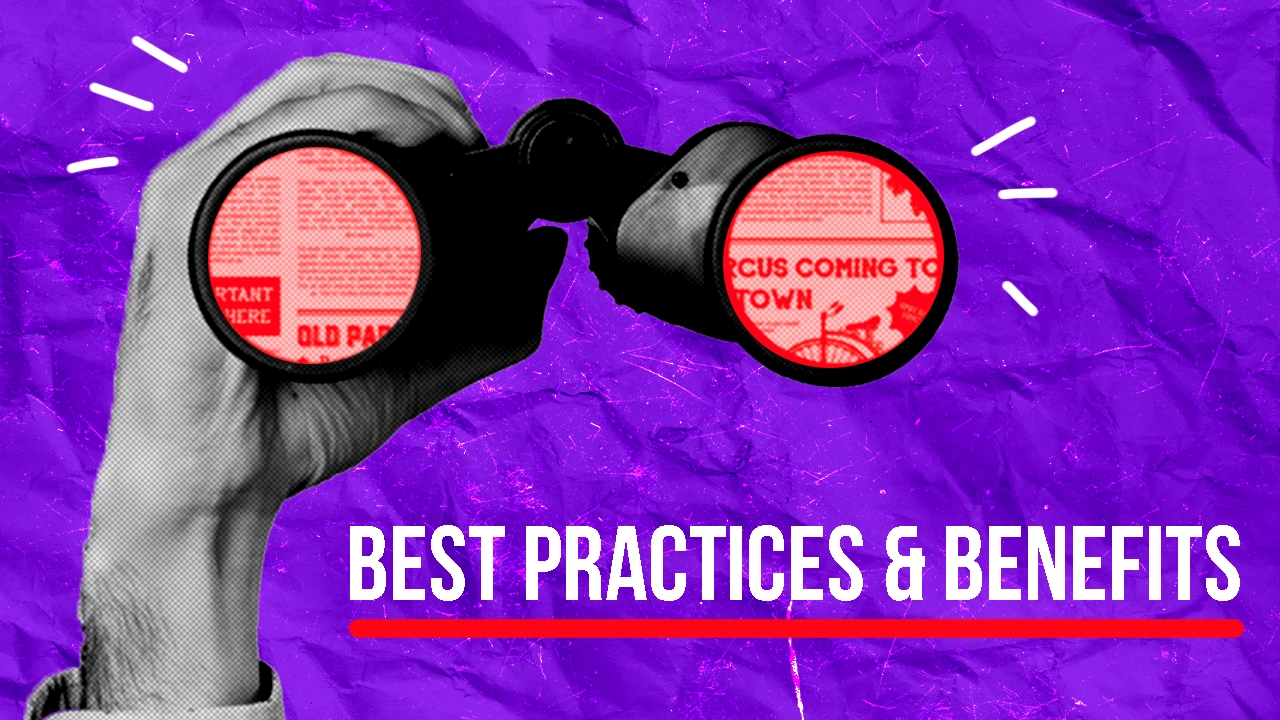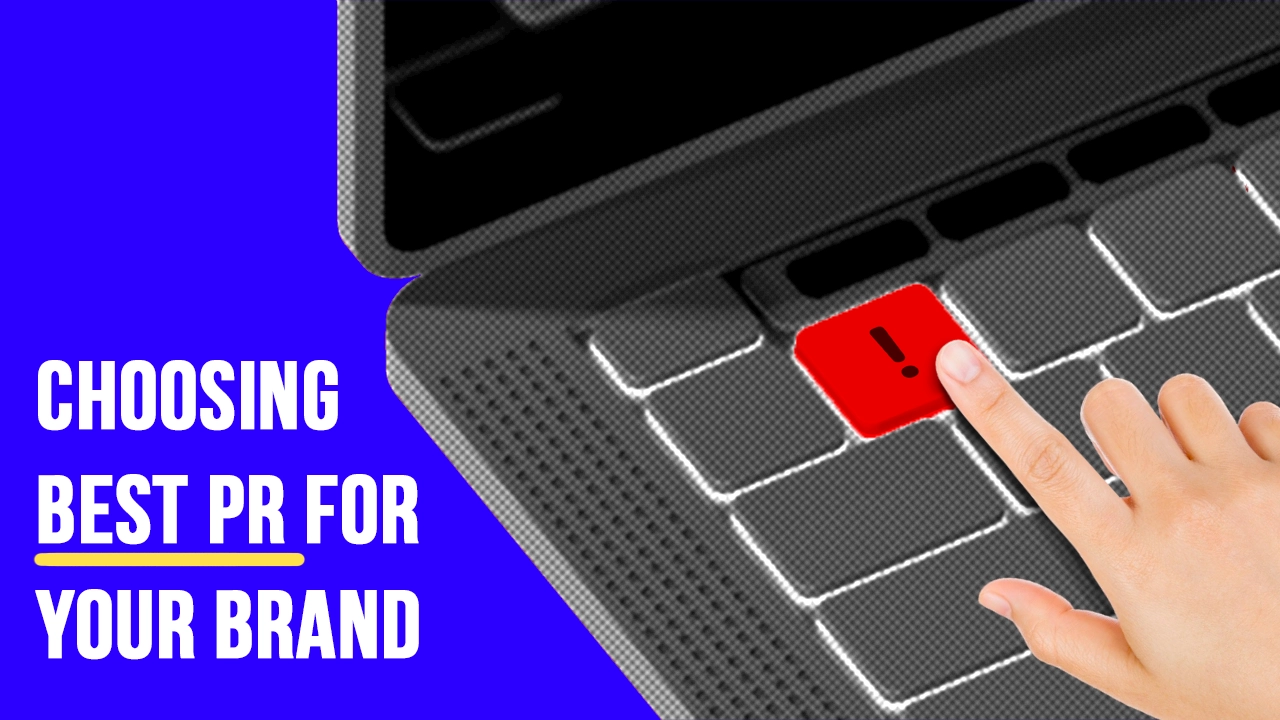Why Press Release Distribution Matters in 2025
In today’s digital landscape, securing media coverage is more competitive than ever. Whether you’re launching a product, announcing a major company milestone, or sharing an industry insight, simply publishing a press release isn’t enough. Without a strategic distribution plan, your news may never reach the journalists, industry professionals, and potential customers who matter most.
Press release distribution remains one of the most effective ways to enhance brand visibility, build credibility, and generate engagement. Despite the growing influence of social media and content marketing, press releases continue to play a crucial role in public relations. When executed correctly, they can secure media coverage, improve search engine rankings, and position your brand as a trusted authority.
But how does press release distribution actually work? What are the best methods for ensuring your news reaches the right audience? More importantly, how can you craft a press release that captures attention and drives results?
Key Takeaways
- Press release distribution remains a powerful PR tool in 2025, helping businesses gain media coverage, improve SEO, and boost brand credibility.
- Different distribution methods exist, including traditional journalist outreach, paid newswire services, and digital distribution through websites and social media.
- Writing a compelling press release is crucial—it should be newsworthy, engaging, and SEO-optimized for better visibility.
- Choosing the right distribution channel matters—businesses can opt for broad syndication via newswire services or targeted outreach for niche media coverage.
- Press release timing impacts success—midweek mornings (Tuesday-Thursday) are the best times for distribution.
- SEO optimization enhances press release effectiveness—incorporating relevant keywords, backlinks, and multimedia can improve search rankings and engagement.
- Real-world case studies show that strategic press release distribution works, driving traffic, media coverage, and industry recognition.
- GlobalWavePR offers professional press release distribution services, ensuring guaranteed media placements, targeted outreach, and measurable results.
This guide covers everything you need to know, from the different distribution methods to SEO strategies and real-world case studies. You’ll also learn how GlobalWavePR’s expert services can help you maximize media exposure and establish your brand as an industry leader.
Table of Contents
What is Press Release Distribution and Why Does It Matter?
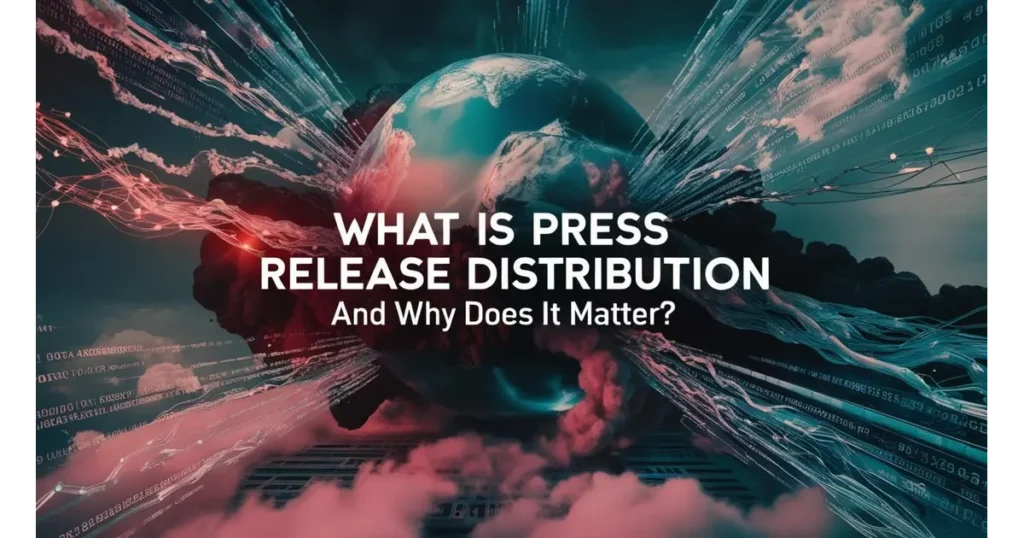
Press release distribution is the process of sharing your news with media outlets, journalists, bloggers, and online platforms to generate coverage and exposure. The goal is to have your story published on reputable websites and industry publications, increasing visibility, credibility, and brand awareness.
Even in today’s fast-moving digital world, press release distribution remains a valuable tool for businesses, organizations, and individuals looking to get their message in front of the right audience. When properly optimized and strategically distributed, a press release can drive website traffic, generate leads, and improve your brand’s online presence.
Why Press Release Distribution is Still Effective in 2025
With so many communication channels available, you might wonder if press releases still hold the same value as they once did. The answer is yes. Press releases offer a unique combination of credibility, organic exposure, and long-term benefits that few other marketing tools can match.
- Brand Awareness: A well-placed press release introduces your brand to a larger audience, positioning you as a key player in your industry.
- Media Coverage: When distributed effectively, press releases can attract journalists and lead to interviews, feature articles, and further publicity.
- Search Engine Optimization (SEO): Press releases published on authoritative websites can improve search engine rankings, making it easier for potential customers to find your business.
- Lead Generation: News coverage from respected platforms drives targeted traffic to your website, increasing inquiries, sign-ups, and sales.
- Industry Authority: Being featured in credible publications strengthens your reputation and establishes trust with your audience.
How Press Release Distribution Works
The process of distributing a press release involves several key steps. Each step plays an important role in ensuring your news reaches the right audience and generates meaningful results.
- Crafting a Compelling Press Release – The foundation of any successful press release campaign starts with well-written, newsworthy content. It should be engaging, concise, and relevant to your target audience.
- Choosing the Right Distribution Channels – Press releases can be distributed through newswire services, direct media outreach, and digital platforms. Selecting the right method depends on your goals and budget.
- Targeting the Right Audience – Your press release should be sent to journalists, bloggers, and media outlets that cover your industry. A personalized approach increases the chances of media pickup.
- Maximizing Online Reach – Beyond traditional media, leveraging social media and SEO best practices can significantly extend the reach of your press release.
- Measuring Performance – Tracking key metrics such as media pickups, website traffic, and audience engagement helps determine the success of your press release distribution.
A well-planned distribution strategy combines traditional PR outreach with digital marketing techniques to maximize brand exposure and generate long-term benefits. A single press release, when properly executed, can continue to drive website traffic, increase brand recognition, and attract new business opportunities long after it is published.
The Value of Press Release Distribution in a Competitive Market
Unlike paid advertising, press releases provide a level of authenticity that resonates with both journalists and audiences. Media coverage generated from a well-placed press release carries more weight than a traditional ad, as readers are more likely to trust news articles from reputable sources.
Additionally, press release distribution offers long-term advantages. A well-optimized press release remains searchable online, continuously driving traffic and improving your company’s digital footprint. Journalists, bloggers, and industry influencers may continue referencing your news, further extending its reach.
For businesses looking to enhance their public relations strategy, press release distribution remains an essential tool. Whether you’re a startup seeking visibility or an established company launching a new initiative, a carefully crafted press release can help you stand out in an increasingly crowded marketplace.
Next Steps: Choosing the Best Press Release Distribution Method for Your Business
With various distribution methods available, it’s important to determine which approach aligns with your goals. From paid newswire services to direct journalist outreach and digital distribution, each method has its advantages. In the next section, we’ll explore the different ways to distribute a press release and help you decide which strategy is right for you.
How Press Release Distribution Works
Press release distribution is a structured process that ensures your news reaches the right audience, including journalists, media outlets, industry professionals, and potential customers. A well-planned distribution strategy maximizes exposure and engagement, increasing the chances of media pickup and online visibility.
Step 1: Writing a Compelling Press Release
Before you begin distribution, it’s essential to have a well-crafted, newsworthy press release. Journalists and media outlets are more likely to publish content that is relevant, informative, and professionally written.
A strong press release should include:
- A clear, attention-grabbing headline that conveys the significance of your news.
- An engaging introduction that answers key questions (who, what, when, where, why, and how).
- Supporting details, quotes, and statistics that add credibility.
- A call to action (CTA) that directs readers on what to do next.
- Media contact information so journalists can reach out for additional details.
Step 2: Choosing the Right Distribution Channels
Selecting the right distribution method is critical to ensuring your press release is seen by the right audience. Here are the most common options:
1. Newswire Services for Broad Distribution
Newswire services distribute press releases to a vast network of media outlets, journalists, and news websites. Popular platforms include:
- PRNewswire
- BusinessWire
- GlobeNewswire
Newswire distribution is ideal for businesses seeking mass exposure and SEO benefits, as press releases syndicated on these platforms often rank in search engines.
2. Direct Outreach to Journalists & Media Outlets
For more targeted media coverage, sending your press release directly to journalists and editors who cover your industry is often more effective than broad syndication.
- Research relevant journalists and reporters in your industry.
- Send personalized email pitches explaining why your news matters.
- Follow up if you don’t receive a response within a few days.
This method requires effort but can lead to earned media coverage, where journalists write full articles about your announcement rather than just republishing your press release.
3. Publishing on Your Company Website & Blog
Adding your press release to your company’s blog or newsroom ensures it is accessible to website visitors and can contribute to long-term SEO value.
- Optimize the page with targeted keywords.
- Include internal links to related company pages.
- Add multimedia (images, videos, infographics) to make the content more engaging.
4. Social Media Promotion
Sharing your press release on social media platforms like LinkedIn, Twitter, and Facebook helps expand its reach. Encourage employees, partners, and industry influencers to share it as well.
5. Industry-Specific Blogs & Forums
If your press release is relevant to a niche industry, submitting it to trade publications, blogs, and online communities can increase visibility among a highly targeted audience.
Step 3: Timing Your Press Release for Maximum Impact
Journalists and media professionals follow strict schedules, so choosing the right time to distribute your press release is essential.
- Best Days to Distribute: Tuesday, Wednesday, or Thursday.
- Best Time to Send: Between 8–10 AM EST, when journalists are reviewing news.
- Avoid: Weekends, holidays, and major competing news cycles.
Step 4: Tracking & Measuring Performance
Once your press release has been distributed, monitoring its performance helps determine its impact. Key metrics to track include:
- Media placements and mentions—Did your press release get picked up by news sites?
- Website traffic spikes—Did your site see an increase in visits after the release?
- Backlink generation—Did journalists or bloggers link to your website?
- Social media engagement—How many shares, likes, or comments did your press release generate?
Using tools like Google Analytics, PR distribution reports, and social media analytics can provide insights into how well your press release performed.
Different Methods of Press Release Distribution

When it comes to press release distribution, there is no one-size-fits-all approach. The right distribution method depends on your goals, budget, and target audience. Some businesses prioritize getting featured in major media outlets, while others focus on gaining visibility through digital platforms and niche industry websites.
Understanding the different distribution options available can help you determine the most effective strategy for your press release campaign.
Traditional Press Release Distribution
Traditional press release distribution involves direct outreach to journalists, editors, and media professionals. This method relies on personalized pitching and strong media relationships to secure coverage in newspapers, magazines, TV, and radio.
Key Distribution Channels in Traditional PR:
- Direct Journalist Outreach – Sending press releases via email to targeted journalists who cover relevant topics in your industry.
- Newsroom Submissions – Some media outlets accept press release submissions through their official newsroom portals.
- Press Conferences & Media Events – Hosting an event to announce major news can help attract media attention.
Advantages:
- Greater credibility when covered by established media outlets.
- Higher chances of securing interviews and feature stories.
- Direct engagement with journalists who may cover future company news.
Challenges:
- No guarantee of media coverage.
- Requires strong media relationships and personalized outreach.
- Can be time-consuming and resource-intensive.
Newswire Press Release Distribution
Newswire services are paid platforms that distribute press releases to thousands of media outlets, news websites, and syndication channels. Some of the most well-known newswire services include PRNewswire, BusinessWire, GlobeNewswire, and Marketwired.
How Newswire Distribution Works:
- You submit your press release to the newswire service.
- The service distributes your press release to a network of media outlets, journalists, and websites.
- Your press release gets published on multiple platforms, improving visibility and SEO.
Advantages:
- Wide reach, with potential placement on major news websites.
- Professional credibility, as newswire services are trusted by journalists.
- Immediate syndication across multiple platforms.
Challenges:
- Can be expensive, with distribution costs ranging from a few hundred to several thousand dollars per release.
- No guarantee that journalists will write a feature article based on your press release.
- Standardized formatting may limit creative storytelling.
Digital & Social Media Press Release Distribution
In addition to traditional media, press releases can gain significant traction through digital channels. Companies can distribute their news via company websites, social media platforms, and industry-specific online communities.
Effective Digital Press Release Strategies:
- Publishing on Your Company Website or Blog – Posting press releases on your website helps with SEO and provides a direct source for media inquiries.
- Sharing on Social Media Platforms – Press releases can be promoted on LinkedIn, Twitter, Facebook, and other platforms to generate engagement.
- Distributing to Industry-Specific Blogs & Forums – Some niche websites accept guest contributions or press release submissions.
- Email Newsletters & Partnerships – Sending press releases to your subscriber base or collaborating with influencers can increase visibility.
Advantages:
- Cost-effective, with no need to pay for distribution services.
- Direct engagement with your audience, encouraging social sharing.
- Greater control over messaging and timing.
Challenges:
- Requires active promotion to gain traction.
- May not have the same level of credibility as traditional media coverage.
- Needs additional marketing efforts to reach journalists.
Paid vs. Free Press Release Distribution
Choosing between paid and free press release distribution depends on your objectives and budget.
| Distribution Type | Benefits | Limitations |
|---|---|---|
| Paid Press Release Distribution | Guaranteed syndication, professional reach, and access to premium media outlets. | High cost, no guaranteed journalist coverage. |
| Free Press Release Distribution | Budget-friendly, great for startups, and allows for a DIY approach. | Limited reach, lower credibility, and weaker SEO benefits. |
A combination of paid distribution for broad reach and free digital distribution for engagement and SEO often works best for businesses looking to maximize visibility.
Benefits of Press Release Distribution
A well-executed press release distribution strategy offers multiple advantages beyond just getting your news published. Whether you’re launching a new product, announcing a business milestone, or sharing important company updates, distributing your press release effectively can enhance brand visibility, drive engagement, and strengthen industry credibility.
Here are the key benefits of press release distribution:
1. Enhances Brand Visibility & Credibility
Getting featured in reputable news outlets, trade publications, and industry blogs increases your brand’s credibility. Consumers and investors are more likely to trust a business that appears in recognized media channels.
- Earned media placements (articles written by journalists about your news) carry more weight than paid advertisements.
- A strong media presence positions your business as an authority in your industry.
- Press releases provide an official channel for sharing company news, ensuring consistency in messaging.
2. Increases Website Traffic & Lead Generation
When your press release is distributed across media outlets, potential customers, investors, and partners are directed to your website.
- Many press releases include clickable links to company websites, product pages, or landing pages, which can result in a direct traffic boost.
- If your press release gets picked up by major news sites, you benefit from high-quality referral traffic.
- A press release can be a valuable tool for generating leads, especially if it promotes an event, product launch, or industry report.
3. Improves Search Engine Optimization (SEO)
Press releases play a significant role in boosting search engine rankings, making your brand more discoverable online.
- Many news sites have high domain authority, and if they publish your press release, it can improve your search ranking.
- Backlinks from authoritative news sources help increase your website’s credibility in Google’s algorithm.
- An optimized press release containing relevant keywords, internal links, and multimedia can improve long-term search visibility.
4. Attracts Journalists & Earned Media Coverage
A well-distributed press release increases the likelihood of earned media coverage, meaning journalists or bloggers pick up the story and write original articles about your announcement.
- Journalists and editors actively scan newswire services for potential stories.
- A compelling, well-timed press release can lead to interviews, feature articles, and extended media exposure.
- Earned media is far more cost-effective and trusted than paid advertising.
5. Strengthens Social Media Engagement & Content Marketing
Press releases are not just for journalists—they can also be leveraged across digital marketing channels to drive engagement.
- Shareable press releases on LinkedIn, Twitter, and Facebook extend reach beyond traditional media.
- Influencers and industry professionals often share high-quality news releases that provide insights or data.
- Press releases can be repurposed into blog posts, newsletters, and video content, maximizing content marketing efforts.
6. Positions Your Business as an Industry Leader
Regularly publishing press releases helps position your company as a thought leader in your industry.
- Announcing new partnerships, research findings, or innovations builds industry influence.
- Companies that frequently appear in the media are seen as more established and authoritative.
- Over time, journalists and analysts may begin proactively reaching out to your company for expert insights.
7. Provides a Cost-Effective PR Strategy
Compared to traditional advertising and paid media, press release distribution is a cost-effective way to reach a large audience.
- Many distribution options are affordable, with free or low-cost press release submission sites available.
- Even premium newswire services cost significantly less than traditional advertising campaigns.
- The SEO and media coverage benefits offer long-term value beyond the initial press release publication.
8. Creates a Long-Term Digital Footprint
Once your press release is published, it remains searchable online for years.
- Press releases act as permanent brand assets that continue to drive organic search traffic.
- Media placements and syndication increase long-term brand awareness.
- Businesses with a strong press release history establish a consistent presence in news search results.
How to Write a Press Release for Maximum Impact

The success of any press release distribution campaign begins with the quality of the press release itself. A poorly written press release is unlikely to gain traction, no matter how well it is distributed.
To capture the attention of journalists and online readers, a press release should be concise, informative, and newsworthy. It should follow a structured format that makes it easy for journalists to extract key information.
Essential Elements of a High-Impact Press Release
- A Compelling Headline – The headline should be short, clear, and engaging. It should immediately convey the newsworthiness of your announcement.
- A Strong Opening Paragraph – The first few sentences should answer the key questions: who, what, when, where, why, and how. This ensures that journalists and readers understand the core message upfront.
- Engaging Body Content – The main body of the press release should provide supporting details, including key facts, statistics, and quotes from company executives or industry experts.
- A Clear Call to Action (CTA) – Direct readers on what to do next, whether it’s visiting your website, signing up for an event, or contacting your press team.
- Media Contact Information – Always include a press contact with a name, phone number, and email address so journalists can follow up with additional questions.
Common Mistakes to Avoid
- Using a Promotional Tone Instead of a Newsworthy Angle – Press releases should focus on factual, objective news, not sales-driven language.
- Lack of Supporting Data or Quotes – A strong press release includes authoritative quotes or statistics to support the announcement.
- Ignoring SEO Optimization – Press releases should include relevant keywords, backlinks, and multimedia to improve search engine rankings.
- Overloading with Unnecessary Information – Press releases should be concise and to the point, ideally between 400-600 words.
Press Release Formatting Best Practices
- Use a Professional Press Release Structure – Journalists expect a standard press release format, with a clear headline, subheadings, and an easy-to-scan layout.
- Write in the Third Person – Press releases should avoid first-person language and instead maintain a professional tone.
- Include Multimedia Elements – Adding images, infographics, or videos can make the press release more engaging and increase media interest.
Maximizing Engagement and Visibility
Once your press release is written, it’s essential to optimize it for search engines and media visibility.
- Use Primary and Secondary Keywords – Natural keyword placement helps improve search rankings.
- Add Hyperlinks to Your Website – Linking back to relevant pages improves SEO and drives traffic.
- Incorporate Social Sharing Buttons – Making it easy for readers to share your press release can increase its reach.
- Distribute at the Right Time – Sending press releases on Tuesday to Thursday mornings tends to yield the best media engagement.
What’s Next? Press Release Distribution Strategies That Work
Now that you understand how to craft a compelling press release, the next step is choosing the best distribution strategy. In the following sections, we’ll explore the most effective ways to get your press release published on high-authority platforms, gain media coverage, and leverage SEO for long-term success.
Best Practices for Press Release Distribution
To maximize the effectiveness of your press release, you need more than just great content—you need a strategic distribution plan. Many businesses make the mistake of sending out press releases without a clear structure or targeting strategy, leading to minimal engagement and poor media coverage. By following best practices, you can increase the chances of media pickup, boost SEO rankings, and drive meaningful traffic to your business.
1. Focus on a Newsworthy & Engaging Story
Journalists receive hundreds of press releases daily. To stand out, your press release must be genuinely newsworthy and provide value to readers.
- Announce major company milestones, such as product launches, funding rounds, strategic partnerships, or industry insights.
- Avoid promotional or sales-driven content—press releases should be informative, not advertising.
- If possible, include exclusive data, market trends, or industry analysis to make your story more compelling.
- Ensure the headline is strong and engaging—journalists decide within seconds whether to read further.
2. Write in a Clear, Professional, and Journalistic Style
A poorly structured or overly promotional press release will likely be ignored. Keep your writing concise, factual, and professional.
- Use a standard press release format with a compelling headline, an engaging lead paragraph, and supporting details.
- Write in the third person and keep the tone neutral, as if a journalist is reporting the story.
- Keep it brief and to the point—ideal press release length is 400-600 words.
- Avoid excessive jargon or technical language that makes it difficult for the average reader to understand.
3. Optimize for SEO to Improve Search Rankings
Press releases can serve as long-term digital assets if optimized correctly. A well-optimized press release can rank in search engines, driving organic traffic to your website.
- Use relevant primary and secondary keywords in the title, headings, and throughout the body text.
- Include backlinks to relevant pages on your website, such as product pages, blog posts, or landing pages.
- Format content with H1, H2, and H3 headings to improve readability and search rankings.
- Add multimedia elements such as images, videos, or infographics to increase engagement and SEO value.
4. Choose the Right Distribution Channels
Where you distribute your press release impacts its reach and effectiveness. Consider a multi-channel distribution approach that combines traditional, digital, and direct outreach.
- For Broad Syndication: Use newswire services like PRNewswire, BusinessWire, and GlobeNewswire to reach major media outlets.
- For Niche Industry Coverage: Submit to industry blogs, trade publications, and professional networks where your audience is active.
- For Direct Journalist Outreach: Research and send personalized emails to journalists, editors, and media influencers relevant to your industry.
- For Social Media Amplification: Share on LinkedIn, Twitter, Facebook, and YouTube, and engage influencers to increase visibility.
- For Company-Owned Media: Publish on your company website, blog, and email newsletters to maintain a consistent PR presence.
5. Distribute at the Right Time for Maximum Impact
Timing can significantly impact whether your press release gets noticed. Journalists and editors operate on tight schedules, and choosing the wrong time can result in your press release getting buried under other news.
- Best Days to Distribute: Midweek (Tuesday to Thursday) tends to have the highest media engagement.
- Best Time to Send: Between 8–10 AM EST, when journalists are checking their inboxes for story ideas.
- Avoid: Weekends, holidays, or major competing news events that may overshadow your press release.
- If announcing major company news, align with industry events or seasonal trends for relevance.
6. Personalize Outreach to Journalists & Media Outlets
Many businesses make the mistake of sending press releases to generic email lists without tailoring their message. Personalized outreach greatly increases the chances of media pickup.
- Research and identify journalists who cover topics related to your press release.
- Craft a personalized pitch email explaining why your news is relevant to their audience.
- Keep the email brief, engaging, and professional—journalists appreciate direct and valuable insights.
- Follow up once, politely if you don’t get a response after a few days, but avoid spamming.
7. Use Multimedia to Enhance Engagement
Adding visual content makes your press release more engaging and increases the likelihood of media coverage.
- Include high-quality images of your product, CEO, event, or data visualization.
- Add videos or infographics to provide a richer storytelling experience.
- News websites prioritize multimedia-rich content, leading to better placement opportunities.
8. Monitor & Analyze Press Release Performance
To understand the effectiveness of your press release, tracking key performance metrics is essential.
- Media pickups and placements: Identify which publications covered your press release.
- Website traffic spikes: Use Google Analytics to measure referral traffic from press release sources.
- Backlink generation: Check if reputable websites linked to your release, boosting your SEO.
- Social media engagement: Monitor shares, comments, and discussions around your press release.
- Most newswire services provide performance reports, including media placements, impressions, and reader engagement metrics.
9. Follow Up & Leverage Press Coverage
Once your press release gains traction, capitalize on the exposure by promoting media coverage across various channels.
- Share media mentions and articles on social media, email newsletters, and your website.
- Engage with journalists and reporters who covered your story to build long-term relationships.
- Repurpose press release content into blog posts, LinkedIn articles, or podcast discussions.
- Use media coverage as a credibility tool when pitching future news stories.
Best Press Release Distribution Strategies
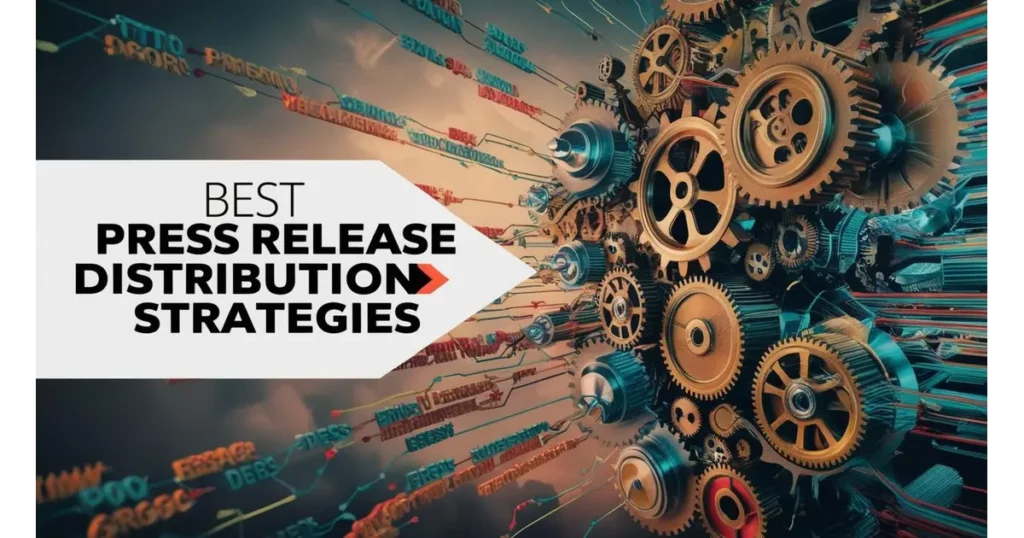
A well-crafted press release is only effective if it reaches the right audience. The key to success lies in strategic distribution—choosing the right platforms, optimizing for search engines, and timing the release to maximize media engagement. Whether you’re aiming for broad media coverage, niche industry exposure, or SEO benefits, a thoughtful distribution plan is essential.
Choosing the Right Distribution Channels
The success of your press release depends largely on where and how it is distributed. Selecting the right channels ensures that your news reaches journalists, potential customers, and key stakeholders.
- Newswire Services for Mass Distribution – Paid newswire services such as PRNewswire, BusinessWire, and GlobeNewswire distribute press releases to a vast network of media outlets. These services are ideal for businesses seeking broad exposure and SEO benefits.
- Direct Journalist Outreach – For targeted coverage, it’s important to send personalized pitches to journalists and editors who cover your industry. This requires research to find the right contacts and craft tailored messages.
- Industry-Specific Websites & Blogs – Many niche websites accept press release submissions, providing an opportunity to reach a highly relevant audience. Platforms related to tech, finance, healthcare, or entertainment often have dedicated news sections.
- Company Website & Blog – Publishing your press release on your own website or blog not only improves SEO but also provides a direct source for media and customers looking for company updates.
- Social Media & Influencer Amplification – Sharing your press release on LinkedIn, Twitter, Facebook, and other social platforms can help increase visibility. Engaging industry influencers to share or comment on your press release can also boost reach.
- Email Newsletters & Partner Networks – Sending press releases to your email subscribers or collaborating with business partners to share the news can enhance distribution and engagement.
Each channel serves a different purpose, and the best strategy often involves a combination of these methods.
Timing Your Press Release for Maximum Impact
Even the most well-written press release can get lost in the noise if it is released at the wrong time. Timing plays a crucial role in whether journalists and audiences take notice of your announcement.
- Best Days to Send Press Releases – Journalists and newsrooms are most active Tuesday through Thursday, with mornings being the optimal time to release news. Mondays tend to be busy with catching up from the weekend, and Fridays have lower media engagement.
- Avoid Holidays & Weekends – Unless your press release is tied to a major event or holiday-specific campaign, it’s best to avoid releasing news on weekends and holidays when media coverage is minimal.
- Consider Industry News Cycles – Be aware of major events, industry conferences, or competitor announcements that could overshadow your press release. Choosing a strategic release date ensures better visibility.
- Breaking News vs. Evergreen Content – If your press release contains time-sensitive news, it should be distributed immediately. For evergreen topics, consider releasing it during off-peak news cycles to avoid competing with bigger stories.
Proper timing ensures that your press release has the highest chance of being picked up by journalists and gaining traction among readers.
Optimizing Your Press Release for SEO
A well-optimized press release can drive long-term organic traffic to your website. In addition to reaching journalists and media outlets, an SEO-focused press release can improve your search rankings and help potential customers discover your brand through Google.
- Use Relevant Keywords Naturally – Incorporate primary and secondary keywords that align with your business, industry, and audience search intent. Keywords should appear in the headline, subheadings, and throughout the content without overstuffing.
- Include Backlinks to Your Website – Adding links to your company website, product pages, or blog posts can drive referral traffic and improve search engine rankings. Be sure to use natural anchor text that flows with the content.
- Optimize Headings & Subheadings – Search engines prioritize well-structured content. Using H1, H2, and H3 tags with relevant keywords improves readability and SEO.
- Incorporate Multimedia Elements – Including images, videos, and infographics increases engagement and can improve search rankings. Press releases with multimedia are more likely to be shared and picked up by journalists.
- Write for Humans First, Search Engines Second – While SEO is important, your press release should always be easy to read, engaging, and informative. Journalists and readers should find value in your content, not just search engines.
A well-optimized press release doesn’t just generate short-term media attention—it continues to drive organic traffic long after its initial distribution.
Real Case Studies: How Press Release Distribution Led to Success
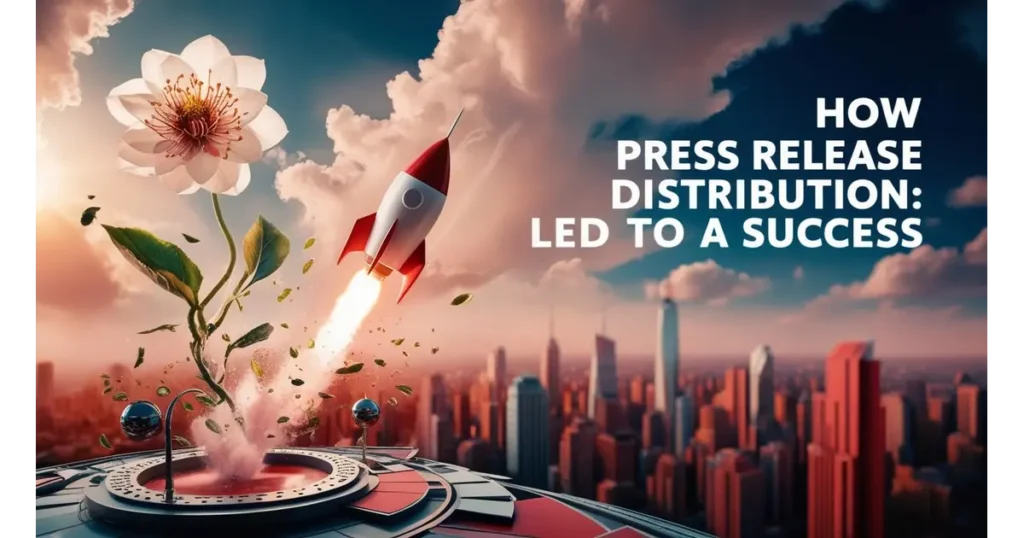
A great press release has the power to generate media coverage, drive engagement, and elevate brand credibility. Below are real-world examples of how press release distribution helped businesses achieve significant results.
Case Study 1: Hasiru Agro – Gaining Recognition in Sustainable Agriculture
- Challenge: Hasiru Agro, a sustainability-focused agriculture startup, needed to increase its industry visibility and attract investors. Despite having an innovative business model, they struggled to get media attention.
- Solution: GlobalWavePR crafted a compelling press release that highlighted Hasiru Agro’s eco-friendly initiatives and distributed it through targeted industry channels. The release was sent to environmental journalists, sustainability blogs, and agriculture trade publications.
- Results: The press release was featured in multiple sustainability-focused publications, leading to an increase in brand awareness, website traffic, and investor inquiries. The company also secured a partnership with a leading environmental organization.
Case Study 2: House of Makeba – Breaking Into the Entertainment Industry
- Challenge: House of Makeba, an independent music label, was launching a new artist but needed widespread publicity to compete in a crowded entertainment market.
- Solution: GlobalWavePR distributed a press release to music industry blogs, entertainment news sites, and digital influencers. The press release was also optimized for social sharing and included multimedia elements such as music video snippets.
- Results: The press release was picked up by multiple entertainment blogs, generating thousands of social media shares and significantly increasing the artist’s streaming numbers. The campaign also led to a feature on a well-known music publication.
Case Study 3: Vicharak – Establishing Authority in the EdTech Industry
- Challenge: Vicharak, an education technology startup, wanted to establish itself as a leader in the EdTech space and attract investors.
- Solution: GlobalWavePR targeted education journalists, EdTech blogs, and online education platforms. The press release emphasized Vicharak’s unique technology and included data-driven insights on how their platform was improving student learning outcomes.
- Results: The press release received coverage in leading education publications, increasing the company’s credibility among investors and school administrators. The campaign also improved Vicharak’s SEO, leading to a sustained increase in website traffic.
Key Takeaways from These Success Stories
- Strategic targeting ensures your press release reaches the right media outlets and industry influencers.
- A compelling story increases the likelihood of media pickup and organic sharing.
- SEO optimization can generate long-term visibility beyond the initial distribution phase.
- Multimedia elements enhance engagement and make your press release more appealing to journalists and online readers.
These case studies demonstrate that press release distribution is still one of the most effective tools for brand building and media exposure. When done right, a single press release can open doors to media coverage, investor interest, and increased brand recognition.
In the next section, we’ll explore how GlobalWavePR’s professional press release services can help you achieve similar success, whether you’re a startup looking to gain traction or an established brand aiming to strengthen your industry presence.
GlobalWavePR: Professional Press Release Services
Effectively distributing a press release requires more than just writing a compelling announcement. The process involves strategic targeting, media outreach, SEO optimization, and performance tracking. This is where GlobalWavePR comes in.
With years of experience in public relations and digital marketing, GlobalWavePR provides businesses with expert press release distribution services that guarantee media exposure and industry recognition. Whether you need to announce a product launch, a company milestone, or an important business update, our team ensures your press release reaches the right audience.
What Makes GlobalWavePR Different?
- Guaranteed Media Placement – Unlike DIY distribution, our services include guaranteed publication on high-authority news websites and industry-specific platforms.
- Targeted Industry Distribution – We identify and reach out to journalists and media outlets that are relevant to your business, increasing the likelihood of earned media coverage.
- SEO-Optimized Press Releases – Every press release is structured to enhance search engine visibility, driving long-term organic traffic to your website.
- Customizable & Affordable Packages – We offer flexible pricing plans tailored to startups, small businesses, and large enterprises, ensuring effective press distribution within your budget.
- Expert PR & Media Strategy Support – Our team of PR professionals crafts compelling press releases that maximize engagement and media interest.
How Our Press Release Distribution Works
- Consultation & Strategy Development – We analyze your press release goals and determine the best distribution strategy.
- Press Release Writing & Optimization – Our content specialists craft or refine your press release to ensure it meets industry and SEO best practices.
- Targeted Media Distribution – We distribute your press release through major newswire services, direct journalist outreach, and digital platforms.
- Performance Tracking & Reporting – We provide a detailed report on press release placements, media pickups, and audience engagement.
Who Can Benefit from Our Services?
- Startups & Small Businesses – Gain credibility and visibility in competitive markets.
- Corporations & Enterprises – Announce major business updates and reach a broad audience.
- Tech & SaaS Companies – Increase media coverage for product launches and innovations.
- E-commerce & Consumer Brands – Drive traffic and sales through online media exposure.
- Nonprofits & Government Agencies – Raise awareness for initiatives and public campaigns.
For businesses looking to enhance their PR strategy, GlobalWavePR provides a comprehensive solution that eliminates the guesswork from press release distribution.
Get Started with GlobalWavePR
If you’re ready to amplify your brand’s reach and secure media coverage, let our experts handle your press release distribution. Contact us today to learn more about our services and pricing options.
FAQ: Everything You Need to Know About Press Release Distribution
How much does press release distribution cost?
Yes. A well-optimizThe cost varies based on the distribution method. Free distribution options are available but offer limited reach, while premium services can range from $299 to $8,000, depending on the number of media placements and syndication level.
Do press releases help with SEO?
Yes press release can improve your website’s search rankings by generating backlinks from authoritative news sites, increasing brand mentions, and driving organic traffic.
How long does it take for a press release to show results?
Press releases typically appear online within 24-48 hours of distribution. However, media coverage and SEO benefits can continue to grow over weeks or even months.
Should I use a PR agency or handle press release distribution myself?
While DIY distribution is more cost-effective, a PR agency ensures professional exposure, guaranteed placements, and strategic targeting that maximizes media coverage. Agencies also provide media relationships that individuals may not have access to.
Can press releases go viral?
Yes, but it depends on newsworthiness, timing, and promotional efforts. Press releases with compelling headlines, strong storytelling, and multimedia content have a higher chance of being widely shared.
What industries benefit the most from press releases?
Press release distribution works for all industries, including technology, healthcare, finance, e-commerce, entertainment, education, real estate, and more. Any business or organization looking to make an announcement can benefit from press release exposure.
How do I measure the success of my press release?
Success can be measured by media placements, website traffic, social shares, backlinks, and audience engagement. Tracking tools like Google Analytics and press release distribution reports provide insights into performance.
Final Thoughts: Why Press Release Distribution is Still a Powerful PR Tool
Press release distribution remains a highly effective way to increase brand visibility, establish industry credibility, and improve SEO rankings. A well-crafted press release, distributed strategically, has the potential to reach thousands—even millions—of readers, journalists, and industry leaders.
With the rise of digital PR, social media amplification, and search engine optimization, press release distribution has evolved beyond traditional media coverage. Today, a successful press release campaign can lead to earned media coverage, viral engagement, and long-term brand exposure.
For businesses looking to maximize the impact of their press releases, working with a professional PR agency like GlobalWavePR ensures the best results. From guaranteed media placements to targeted industry distribution and SEO optimization, our team helps businesses navigate the complex media landscape with ease.
Ready to Distribute Your Press Release?
If you want to get your news noticed, build brand authority, and generate real media exposure, GlobalWavePR is here to help. Contact us today to get started on your press release distribution strategy.

